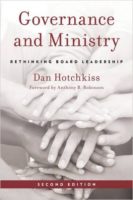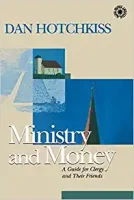The job was to facilitate what may have been the most diverse and ecumenical gathering of rabbis ever. Some tension was apparent even as the rabbis started to arrive: men in black with sidelocks and long beards, women wearing yarmulkes and tallits, spanning all the major branches: Orthodox, Conservative, Reform, and Reconstructionist. One man, unwilling to conform to any of the standard movements, had organized his own.
Most amazingly, one rabbi, greeting everyone and vigorously shaking hands with all the men, was from the Lubavitch Chabad, a movement that irritates and worries all the others. Chabad centers, with their mystical ideas and their lack of dues, have become a nuisance from the point of view of many synagogues.
With so much variety, you might imagine fifty or a hundred, but the little room had only fourteen people in it. Fifteen, if you count me. Sixteen, if you count Elaine Goldstein, the woman laying out refreshments and about to leave. Elaine worked for the Jewish Federation, where she worried about rabbis. She found them lonely, isolated, stressed, and, for all their Jewish learning, ill-prepared for the realities of life in congregations.
So one by one Elaine schmoozed and nudged the rabbis into coming. She called the Alban Institute and got me. My bio on the website says I help with planning, governance, training, conflict, et cetera. Another way to say it, though, is: I walk into a group I don’t belong to, where neither I nor anybody else knows what will happen, and I watch while something does.
For this three-day rabbinical retreat, I had prepared three days’ worth of material. We were going to learn together about growth and decline in congregations, goal-setting and accountability, and I forget what else. I might as well have saved my trouble.
We started the first evening with a go-around—a check-in—which took much longer than I planned, because Elaine was right. These rabbis, even more than many clergy, had a lot to share, a lot they couldn’t talk about with anybody else, because—you’ll have to take my word for this—a lot of what a rabbi or a minister experiences, you can’t imagine.
Among the pains and troubles that poured out that evening, one rose right to the top of our agenda. One rabbi, Jacob, had a yahrzeit. And he asked the group to form a minyan to say Kaddish.
Okay, some of you know what I just said—though there were four languages involved. Minyan is Hebrew for a group of ten who form a quorum for a prayer group. Kaddish is Aramaic, for one of the most moving and important prayers in the tradition—the prayer for the dead. Yahrzeit is Yiddish—literally “year-time,” an anniversary. Jacob had lost his brother; he was asking the group to pray with him.
You may see what rough seas we were heading into: Some of the rabbis wouldn’t count a woman in a minyan. Some of them wouldn’t even pray unless men were physically separated from the women. And a couple of the women made it clear: they would not be separated, and they would be counted.
I was no longer the facilitator. I had become the awed spectator of a learned debate among a group of fourteen rabbis about how to reconcile their differences in order to achieve a goal they all agreed on: Kaddish must be said. A bereaved Jew’s request to form a minyan for his brother was a great mitzvah: a non-debatable priority.
I’ll tell you how they solved it later on, but for right now I want to leave you where I was for most of two days: awed at the willingness of people who were in such sharp disagreement about so many things to struggle with their differences in the name of a shared purpose.
At our best, that’s what we do in congregations: struggle with our differences in the name of a shared purpose.
It took most of a day to solve the problem: fourteen rabbis speaking English, Aramaic, Hebrew, and—when they got really angry—Yiddish.
I’ll tell in a moment how they solved it. For now, let me say that at our best, that’s what we do in congregations: struggle with our differences in the name of a shared purpose. Except that we don’t, always. Sometimes we lose track our purpose. But my hope for strategic planning—and for you and your communities of faith—is just that: that we will struggle with our differences in the name of a shared purpose.
Oh, right: the rabbis. As you recall, we left them striving over how to find a minyan to say Kaddish, when some of them wouldn’t pray unless the men were separated physically from women. Some would and some wouldn’t count the women in the minyan. And a couple of the women refused to be separated, and insisted that they would be counted.
And they all agreed that Kaddish must be said. A bereaved Jew’s request to form a minyan for his brother was a mitzvah: a nondebatable priority. In that community there was no doubt that covenant had created a new thing: a center of loyalty to which all owed their best and strongest efforts.
In the end, it was the Orthodox who gave the most—they found a local congregation where they could say Kaddish simultaneously with the rabbis’ minyan. The women adjusted their participation to accommodate some of the more moderate men. In the end, Jacob had not one minyan but two. And I, a functional illiterate for most of my own retreat, left with a gift of lasting awe for fourteen rabbis’ willingness to struggle with their differences in the name of a shared purpose.
Dan Hotchkiss has consulted with a wide spectrum of churches, synagogues, and other organizations spanning 33 denominational families. Through his coaching, teaching, and writing, Dan has touched the lives of an even wider range of leaders. His focus is to help organizations engage their constituents in discerning what their mission calls for at a given time, and to empower leaders to act boldly and creatively.
Dan coaches leaders and consults selectively with congregations and other mission-driven groups, mostly by phone and videoconference, from his home near Boston. Prior to consulting independently, Dan served as a Unitarian Universalist parish minister, denominational executive, and senior consultant for the Alban Institute.


